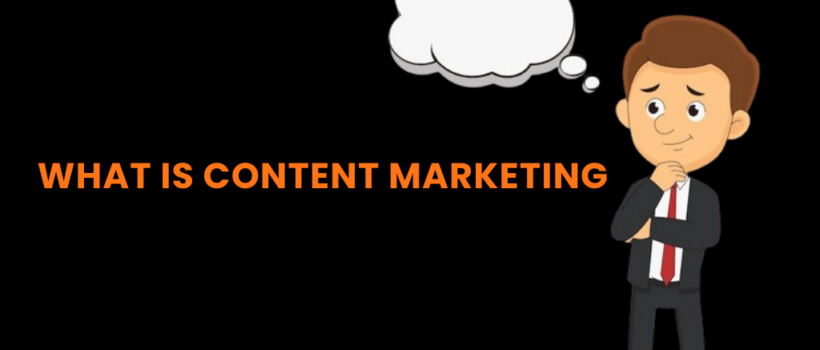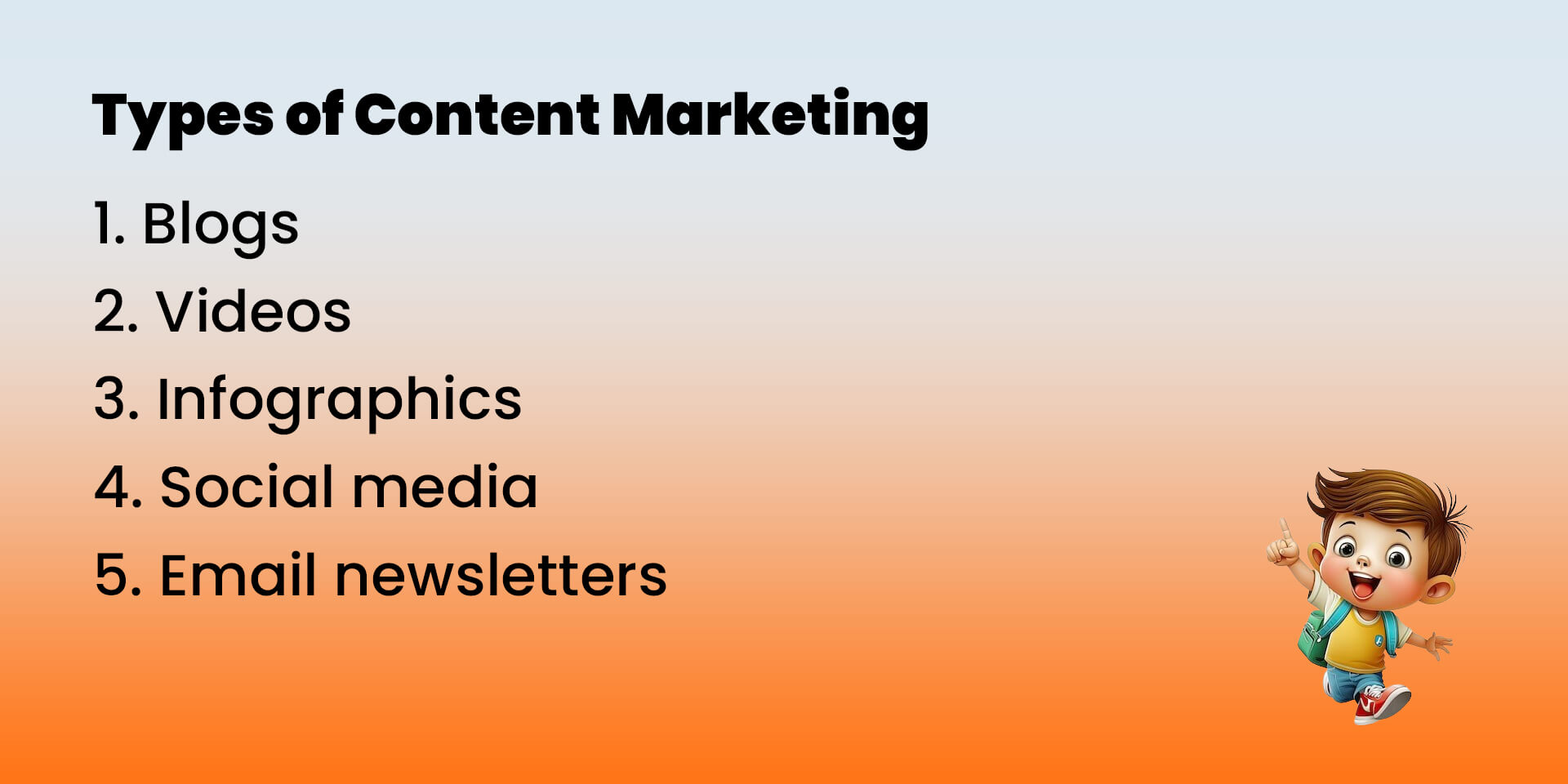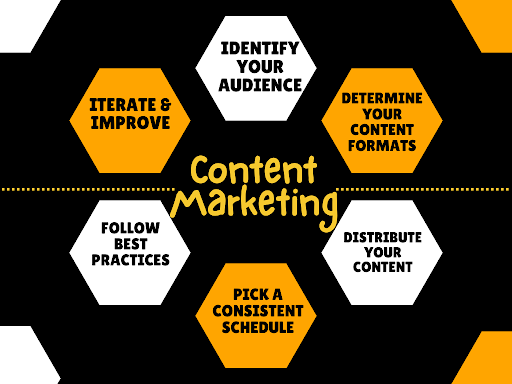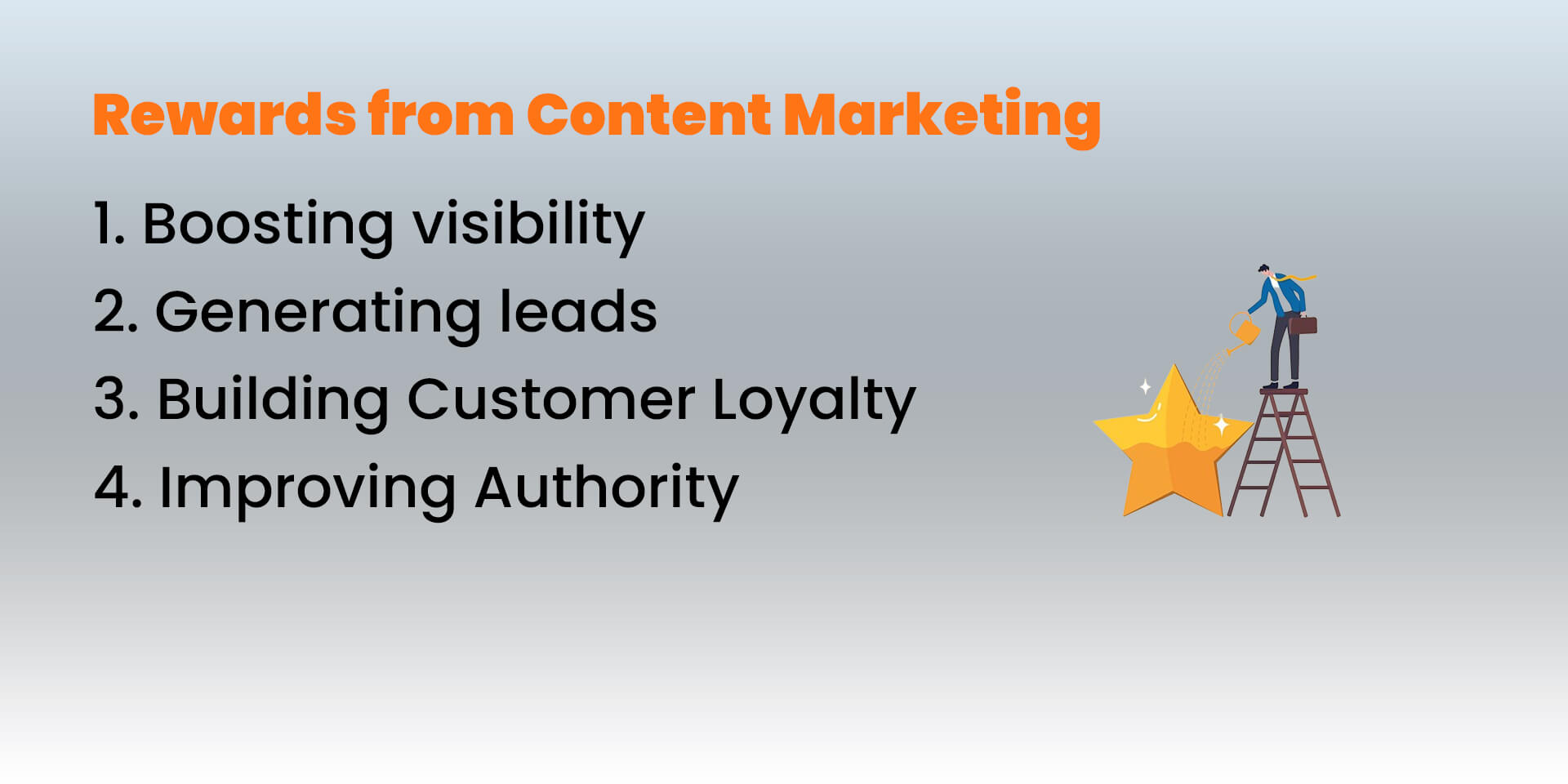
What is Content Marketing? | All you need to know
Content marketing is a powerful tool that businesses and marketers can use to attract new customers, build trust, and establish authority in their industry. It’s a long-term strategy that focuses on consistently delivering high-quality, relevant content that educates and, ultimately, sells.
Content marketing is about building relationships with your target audience by giving them valuable content that positions your brand as an authority they can trust.

Content marketing in simple terms
A lot of businesses think of content marketing as just blogs, social media, and videos, but it’s so much more than that. At its heart, content marketing is about storytelling, and humans have been telling stories for as long as they could speak.
Today, content marketing is a digital marketing strategy that involves the creation and sharing of relevant materials, such as articles, videos, social media posts, and emails, to attract and engage audiences, establish expertise, promote brand awareness, and ultimately drive sales.
The goal is to get your content in front of as many people as possible, so they know who you are and what you do.
Types of content marketing

There are several different types of content marketing that you can use to reach your audience. Some of the most common types include:
1. Blogging.
This is writing articles and blog posts that educate and inform your target audience about topics related to your industry.
2. Videos.
Creating informative or entertaining videos that can be shared on social media or your website.
3. Infographics.
Using graphics and charts to present information in a visually appealing way.
4. Social media.
Regularly posting updates, tips, and other content on social media to engage with your audience. This is what social media management seeks to accomplish. This article discusses in depth what social media management is.
5. Email newsletters.
Sending regular email newsletters to your subscribers that include valuable content and special offers.
How Content Marketing Works
Content Marketing follows these three simple steps;
1. Attract 2. Delight 3. Engage to Close Sales
Content marketing guides customers through the sales cycle. From creating awareness about your products and services to providing information for consideration of your products and finally, the purchase.
Delivering the right content at each stage simplifies the process.
Let’s explore these different stages of your customer’s journey and what content best suits them.
Stage 1: The Awareness Stage
Focus on top concerns with educational content like articles, blog posts, videos, and newsletters. Save selling to your customers for the later stages. At this stage, they are looking for information to help them solve their challenge.
Stage 2: The Consideration Stage
Offer a hybrid of helpful information and marketing. Use case studies, how-to articles, videos, and checklists. These are aimed to provide them with more ind-depth solutions to their challenges.
Stage 3: The Closing Stage
Emphasize expertise, knowledge, and differentiating benefits. Utilize case studies, user-generated content, buyer’s guides, product videos, and research reports.
How to Get Started with Content Marketing

To get started with content marketing, you’ll want to first identify your target audience. You should also create a content strategy that outlines your goals, messaging, and how you plan to distribute your content.
Then, you can start creating content that’s relevant and useful to your audience. You should aim to publish content on a consistent basis, so your audience knows when to expect new content from you.
To get started with content marketing, follow some of these steps;
1. Identify Your Audience: Clearly understand audience priorities, challenges, and preferences. Craft profiles or choose segments to write for.
2. Determine the Right Formats: Align formats with the sales cycle stage. Choose videos, checklists, or buyer’s guides based on audience needs.
3. Decide How to Distribute: Select channels based on audience habits. Email, social media, or printed content—choose what makes sense for your audience.
4. Choose a Sustainable Schedule: Develop a short-term plan that aligns with your budget and resources. Track content creation time for realistic scheduling.
5. Follow Best Practices: Create clear, jargon-free, and actionable content. Focus on quality over quantity for a more effective campaign.
To learn more about how to create exciting content for your audience, check out our article on how to create exciting content content for social media.
The Benefits of Content Marketing

1. Boosting Visibility
A well-crafted content strategy attracts customers and website visitors, enhancing online visibility. Educational and informative content addressing audience interests increases visibility through websites and social media.
2. Generating Leads
Educational content builds trust, making potential customers comfortable with purchases. This, in turn, generates more leads, fostering relationships with potential shoppers.
3. Building Loyalty
Loyalty is crucial, and content marketing aids by making consumers trust the brand. Informative content helps build trust, positioning the brand as an authoritative source.
4. Improving Authority
Content development is ideal for enhancing authority and becoming a thought leader. Trust-building content can position the brand as the most authoritative in a specific industry.
How to develop a Content Marketing Strategy
1. Know Your Audience.
Crafting content that resonates with your target audience is paramount. Understand their needs, their pain points, and their language to create content that they find valuable and compelling.
2. Be Consistent
Consistency is key in content marketing. Your voice, style, and posting schedule should be consistent to keep your audience coming back for more.
3. Deliver Value
The goal of your content should first and foremost be to provide value. This not only helps establish your brand as a credible voice in your industry but also encourages your audience to share your content with others.
4. Keep it Engaging
Content marketing should not be bland or boring. It should be engaging and interesting enough to hold your audience’s attention.
By successfully implementing these principles into your content marketing strategy, you’re setting an enticing stage for potential customers to discover who you are, what unique value you offer, and why they should choose your brand.
In conclusion, content marketing is a powerful digital marketing strategy that can help businesses of all sizes attract new customers, establish authority, and drive sales. By consistently creating high-quality, relevant content, businesses can build strong relationships with their target audience and position themselves as an authority they can trust.
Undoubtedly, content marketing is a potent tool at Kabin & Set Digital. It offers unique ways to engage audiences, convey value, and eventually, convert potential customers into loyal ones. Regardless of the niche, well-designed content with a clear objective and strategic methodology can fascinate audiences and drive engagement, significantly boosting business growth.
Ready to use content marketing to grow your business? Contact us for a free consultation. Let us understand your needs.
Frequently Asked Questions (FAQs) on Content Marketing
Content marketing is essential because it serves as the foundation of a successful digital marketing strategy. It plays a crucial role in building brand awareness, engaging the target audience, and driving conversions.
Social media is a vital channel for Content Marketing, providing a platform to distribute and amplify your content. Leveraging social media effectively enhances visibility, fosters community engagement, and extends the reach of your brand.
Absolutely. Content Marketing offers a cost-effective way for small businesses to establish their online presence, connect with their target audience, and compete in the digital landscape.
Both video and written content have their merits. Video excels in conveying emotions and complex ideas, while written content is often more accessible. The choice depends on your audience and the nature of your message.
Consistency is key in Content Marketing. Determine a publishing schedule that aligns with your resources and audience expectations. Quality should never be sacrificed for quantity; find a balance that suits your brand.
One common pitfall is neglecting to understand your audience. Tailor your content to their needs and preferences. Additionally, overlooking SEO best practices can limit your content’s visibility.

